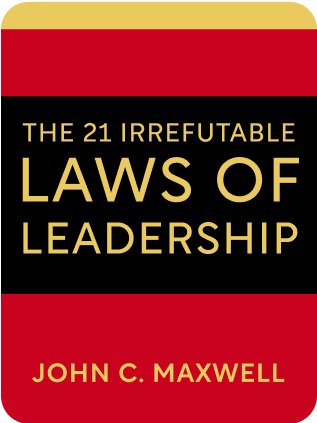

This article is an excerpt from the Shortform book guide to "The 21 Irrefutable Laws Of Leadership" by John C. Maxwell. Shortform has the world's best summaries and analyses of books you should be reading.
Like this article? Sign up for a free trial here .
What is the Law of Buy-in? What can you, as a leader, do to get people to see and follow your vision?
The Law of Buy-in is the fourteenth law in The 21 Irrefutable Laws of Leadership by John C. Maxwell. The gist of the Law of Buy-in is that people first buy into the leader, and then into their vision. So if you want others to follow your vision, you need them to, first and foremost, follow you—their leader.
Keep reading to learn about the Law of Buy-in plus some real-world examples of its application.
Understanding the Law of Buy-In
From the point of view of a leader, the order of operations is 1) find a vision, 2) find followers. The follower’s order of operations is opposite—1) find a leader, 2) find a vision. Followers are less interested in the cause than the leader. It’s a common myth that if a cause is noble or objectively the right course of action, people will follow it. In fact, if a cause is good but a leader isn’t, people will go find a new leader for that same cause.
Why does this happen? You, as a leader, are a messenger, and so you’re tied to the message. When you propose a vision, it’s associated with you. If you’re a credible messenger, then the message goes through. If you’re not, people will look for a more attractive mail carrier.
The Law of Buy-in is the reason why famous people are hired to endorse products, and why actors support causes. People think, “Oh, if Tiger Woods likes it, then it must be good or have value.” If you trust the person who’s giving you the message, then you trust that they’ve considered and/or fact-checked the message, and determined that it’s valid.
Consider the four cases below. In every case, you’ll see that buying in to the leader is the most important factor.
- People don’t like the leader and don’t like the vision. In this situation, people only follow a leader if they’re forced to.
- For example, a person might follow a dictator because they’ll be murdered if they don’t.
- People don’t like the leader but do like the vision. If people like the vision, they’ll support it—they’ll just go look for someone else to lead it.
- For example, every professional sports team has the same vision—win. It’s easy enough to find a new coach if you don’t like the one you have.
- People like the leader but not the vision. In this case, people will either compromise or entirely change their vision.
- For example, few British people were on board with Tony Blair’s Iraq policy. However, they liked Blair, so they kept electing him anyway.
- People like the leader and the vision. This is the ideal situation—when followers are on board with everything, they will follow the leader no matter what.
Example of Failed Application of the Law: Dot-Com Boom and Skyline Church
Maxwell doesn’t provide an extended example of failure to follow this law. He mentions a few shorter examples:
- During the dot-com boom, many Silicon Valley entrepreneurs tried to start companies. Even when they had good ideas, they couldn’t get investors, because they hadn’t established themselves as leaders.
- When John C. Maxwell first arrived at Skyline Church, his vision was to build a new auditorium (see Law #4 for more detail). Since he was brand-new to the community, he knew that while the auditorium was a compelling vision, he wasn’t yet a compelling enough leader to successfully sell the idea to the congregation. (It wasn’t until two years later, after gaining credibility, that he shared his vision.)
Example of Successful Application of the Law: Mahatma Gandhi
When the people of India wanted freedom from the British, they turned to Mahatma Gandhi to lead them. Gandhi had fought the South African apartheid government for over twenty years for the rights of Indians and other minorities, and people respected and believed in him. Interestingly, Gandhi’s vision to achieve independence was nonviolent civil disobedience. Up until this point, the people who wanted to follow Gandhi had been using violence. Gandhi was such a powerful leader that his followers didn’t care that his strategy was the exact opposite of theirs—they wanted to follow him anyway.
After the British massacre at Amritsar, Gandhi asked his followers to respond nonviolently. He asked people to avoid foreign-made clothes and only wear homespun. He decided to use a march to protest the Salt Act and use this as a rallying point. Not all of these requests aligned exactly with his followers’ strategies or visions, but the followers followed him anyway, according to this law. India gained home rule in 1947.
Applying the Law of Buy-in
You can develop credibility with individual people in many ways, including developing your relationship with the individual, giving them resources, helping them reach personal goals, and by applying Laws #6 (trustworthiness), #13 (lead by example), and #20 (develop them as leaders).

———End of Preview———
Like what you just read? Read the rest of the world's best book summary and analysis of John C. Maxwell's "The 21 Irrefutable Laws Of Leadership" at Shortform .
Here's what you'll find in our full The 21 Irrefutable Laws Of Leadership summary :
- Why working with people is the only way to do meaningful work
- How to become the kind of person that can get things done
- Why you don't need to be good at all the laws of leadership to be a good leader







Can we find the law of the buy in scripture?